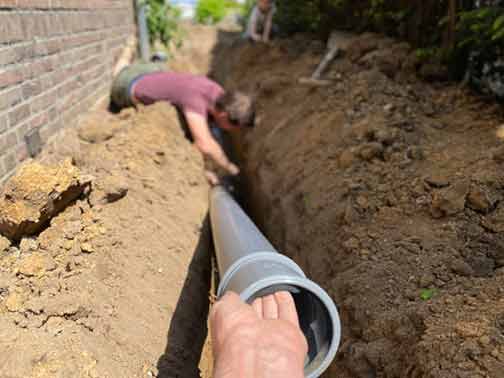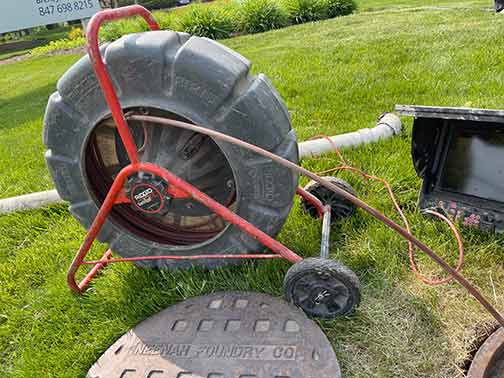
Sewer lines are an essential part of any home or business. Not only do they provide a path for wastewater to leave the building, but they also ensure that it gets to the correct location. Below we’ll cover everything you need to know about sewer lines, including what they are, how they work, and how to maintain them.
What Is a Sewer Main Line?
A sewer line is the large underground pipe that runs from a building’s plumbing system to the municipal sewer system. It carries waste and wastewater from the building to the sewer system, where it is then treated and disposed of appropriately.
Main sewer lines are typically made of materials like PVC, cast-iron, or clay. They can range in size from 4 inches to over 36 inches in diameter, depending on the size of the building they serve and the volume of wastewater that needs to be carried away.
How Does a Main Sewer Line Work?
When you flush the toilet, run the dishwasher, or take a shower, all of the wastewater flows through the plumbing system and into the sewer main line. Gravity carries the waste down the line and into the municipal sewer system.
Once in the municipal sewer system, the wastewater flows to a treatment facility where it is treated and purified before being released back into the environment.
Why Is Sewer Line Maintenance Important?
Sewer line maintenance is essential for preventing clogs, backups, and other plumbing problems. Over time, debris and sediment can build up in the sewer line, causing clogs and restricting the flow of wastewater.
If left unchecked, these clogs can lead to sewage backups, which can cause water damage, foul odors, and even health hazards. Regular maintenance can help prevent these issues and keep your plumbing system running smoothly.
How to Maintain Your Sewer Line
There are several ways to maintain your sewer line, including:
Be mindful of what you flush down the toilet
To prevent clogs and backups, avoid flushing anything besides toilet paper down the toilet. Items like paper towels, feminine hygiene products, and baby wipes can cause clogs when flushed.
Use a drain screen in your sink and shower
A drain screen can help to prevent hair, soap scum, and other debris from entering the sewer line and causing clogs. Be sure to clean the screen regularly to prevent buildup.
Have your sewer line inspected regularly
A professional plumbing inspection can help to identify any potential issues with your sewer line before they become major problems. A plumbing professional can use a specialized camera to inspect your sewer line and identify any clogs, cracks, or other issues.

When to Call a Professional Plumber
If you notice any of the following signs, it’s time to call a professional plumber:
Slow draining sinks or toilets
If your sinks, toilets, or other plumbing fixtures are slow to drain, it could be a sign of a clog in your sewer line and in need of a sewer rodding or hydro jetting service.
Foul odors near your plumbing fixtures
Foul odors near your plumbing fixtures could indicate a problem with your sewer line.
Sewage backups
If sewage is backing up into your home or business, it’s time to call a nearby plumber immediately. Sewage backups can cause water damage, foul odors, and health hazards.
Conclusion
Understanding what a sewer line is, how it works, and how to maintain it is essential for any homeowner or business owner. By taking proactive steps to maintain your sewer line and calling a plumber when necessary, you can prevent plumbing problems and keep your plumbing system working properly.

